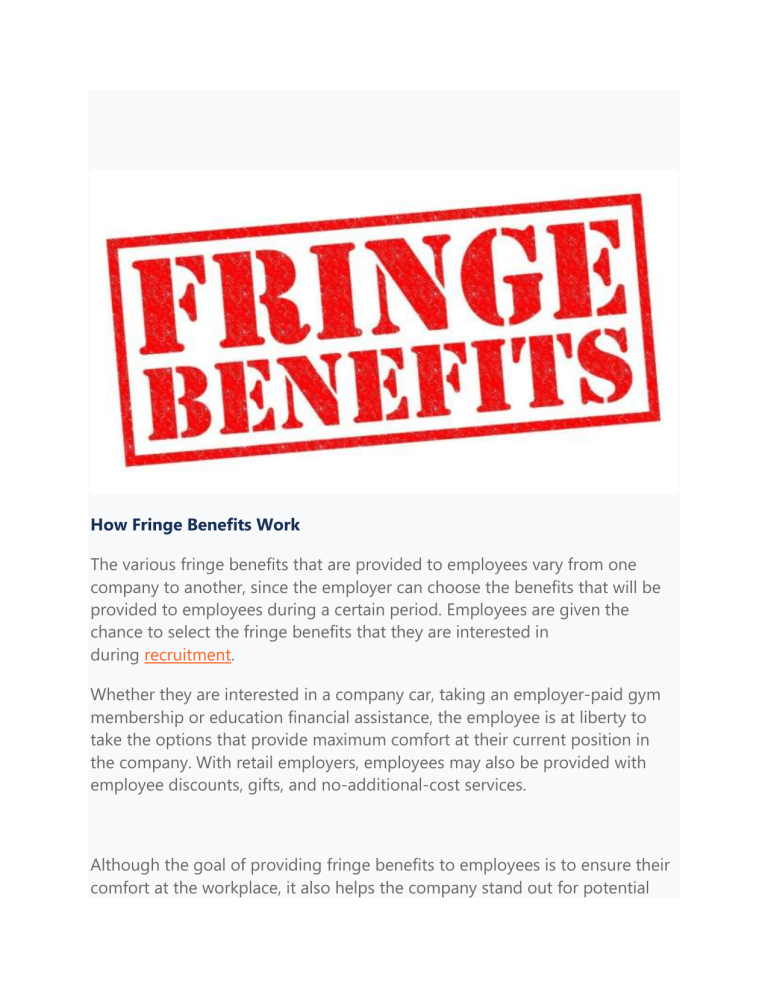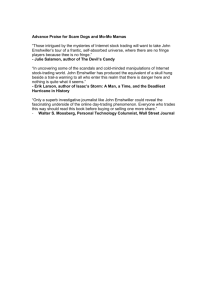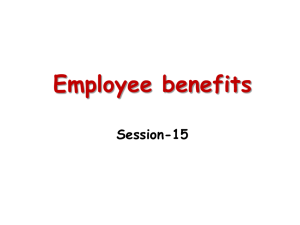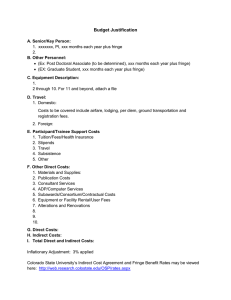
How Fringe Benefits Work The various fringe benefits that are provided to employees vary from one company to another, since the employer can choose the benefits that will be provided to employees during a certain period. Employees are given the chance to select the fringe benefits that they are interested in during recruitment. Whether they are interested in a company car, taking an employer-paid gym membership or education financial assistance, the employee is at liberty to take the options that provide maximum comfort at their current position in the company. With retail employers, employees may also be provided with employee discounts, gifts, and no-additional-cost services. Although the goal of providing fringe benefits to employees is to ensure their comfort at the workplace, it also helps the company stand out for potential employees. In highly competitive markets, employers may find it challenging to retain top employees on salary alone. Fringe benefits serve as additional compensation. Providing unique fringe benefits to employees helps the company stand out from its competitors. It provides a greater opportunity to attract high value and talented employees from schools or from competing companies. Types of Benefits Fringe benefits can be categorized into two categories. Some benefits are required by law and others are provided at the employer’s discretion. 1. Fringe benefits required by law The mandatory fringe benefits are intended to provide employees with medical care, mitigate them from economic hardships in the event they lose employment, and provide them with retirement income to sustain them during retirement. The following are some of the mandatory fringe benefits that employers are required to provide: Health insurance This fringe benefit is contained in the Patient Protection and Affordable Care Act. It requires businesses that employ more than 50 people to provide healthcare plans, and employees are required to have health insurance coverage. The health care plans cover visits to primary care physicians, specialist doctors, and emergency care. Unemployment insurance The Federal Unemployment Tax Act (FUTA) requires employers to pay a federal and state unemployment tax to the Department of Labor, which provides wages, training, and career guidance to employees who become unemployed due to no fault of their own. Such benefits are meant to provide brief monetary assistance to unemployed citizens who meet the requirements of the act. Medical leave Businesses that employ over 50 employees are required by law to provide family and medical leave to an employee who has worked for over one year in the company. The medical leave is unpaid, protected, and can last up to 12 weeks. Worker’s compensation The worker’s compensation benefit is administered by the Department of Labor to federal workers who are injured at their workstation or acquire an occupational disease. Employees are provided with medical treatment, wage replacement benefits, rehabilitation, and other benefits. The compensation requirements vary by state, and injured employees should contact their state worker’s compensation board. 2. Fringe benefits not required by law The following benefits are provided at the employer’s discretion. On the side of the employer, most of these benefits are taxable, but with certain exceptions. Examples of these fringe benefits include: Stock options Disability insurance Paid holidays Education reduction Retirement planning services Life insurance Paid time off Commuter benefits Achievement awards Fitness training Employee discounts Meal plans



